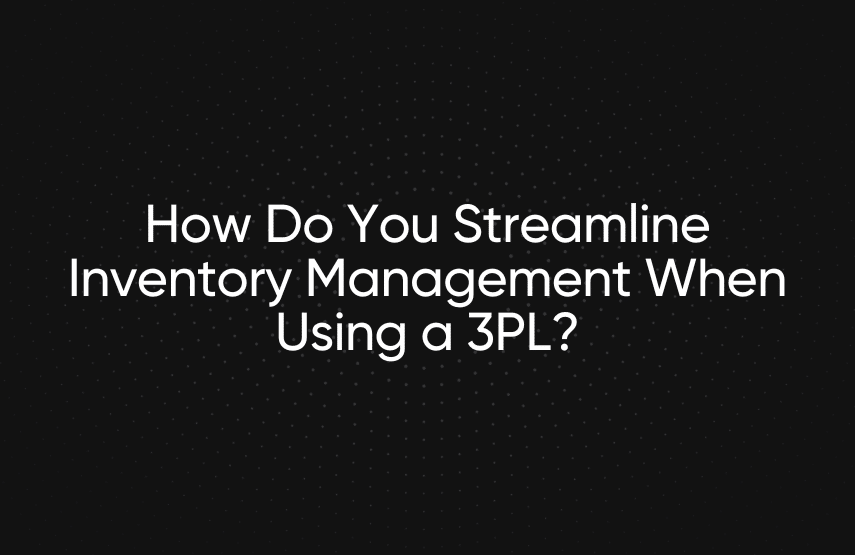How Do You Streamline Inventory Management When Using a 3PL?

Partnering with third-party logistics (3PL) providers helps companies manage complex order fulfillment. A 3PL vendor can handle any supply chain processes, including warehousing, picking and packing, inventory forecasting, transportation, and freight forwarding. This is vital for omnichannel retailers and those with high order volumes.
A 3PL provider can streamline the various order fulfillment process. Doing so gives companies lower shipping costs and faster order fulfillment. It also improves accuracy and efficiency. Using a 3PL accurate inventory management requires a strong connection between your e-commerce backend and your 3PL provider.
Warehouse management systems (WMS) are the tool of choice for most 3PLs. A study from 3PL Central found that 87% of 3PL services use a WMS. Respondents cited greater order accuracy and operational efficiency as the key reasons.
The backend systems you use for order and inventory management will determine how you should integrate with a 3PL’s WMS. A standalone order management system (OMS) gives you a flexible solution for creating a real-time connection with logistics providers.
[toc-embed headline=”Building a Real-Time Connection for Improved Inventory Management”]
Building a Real-Time Connection for Improved Inventory Management
WMS software lets 3PLs manage daily warehouse tasks and define processes for picking, packing, and shipping. There are detailed stock levels for on-hand and incoming inventory, and users can automate much of the order fulfillment process.
Automation is important as manual tasks increase the risk of errors. A WMS also integrates well with other systems. You can use this connection to create a two-way flow of information that improves visibility throughout your supply chain.
You can connect your OMS to the 3PL service in several ways. The first is through APIs. The automation and real-time updates make it the most effective method. You can also use FTP file transfer. Here are some examples of how the OMS and WMS interact during different stages of inventory management:
Receiving inventory
3PLs manage the receiving process by tracking incoming deliveries and then updating inventory. The 3PL provider’s WMS can do this automatically at the end of each day. Or, someone can run a report to reconcile any changes. The system then passes the new totals to your OMS, ensuring stock levels are accurate.
Processing orders
When a customer places an order, the retailer’s OMS must pass the order details to the 3PL. There are two ways to do this. First, the software can send an order confirmation to the 3PL via API. Second, users can also export the order and then send it to the 3PL using various methods.
The 3PL begins processing the order and updates stock levels. When the order ships, the 3PL passes the tracking details back to the retailer’s OMS. They also send a notification to change the order status.
Processing returned items
Reverse logistics is an important aspect of 3PL inventory management. When merchants receive return requests through support channels, they then process them based on their policy.
Some OMS can store return rules for items. These rules determine how long a customer has to initiate a return from their account.
Once the merchant accepts the return, the customer delivers the items to the 3PL warehouse. The 3PL then processes the return, deciding whether to reshelve or scrap the item. Then, they go back to the WMS and update stock levels if needed.
The system sends any changes to the OMS as a notification saying the return is processed. Then, it triggers the merchant’s system to issue the refund.
[toc-embed headline=”Conclusion”]
Conclusion
3PL providers can help companies optimize processes and reduce costs. Strong inventory management when using a 3PL requires seamless integration between your systems.
With fabric OMS, you have a robust tool to build a real-time connection with your favorite logistics providers. You can process omnichannel orders and automatically update inventory across channels to ensure customers always have a great post-purchase experience.

Product @ fabric. Previously @ EMAAR NEXT, Groupon, and NorAm International Partners.